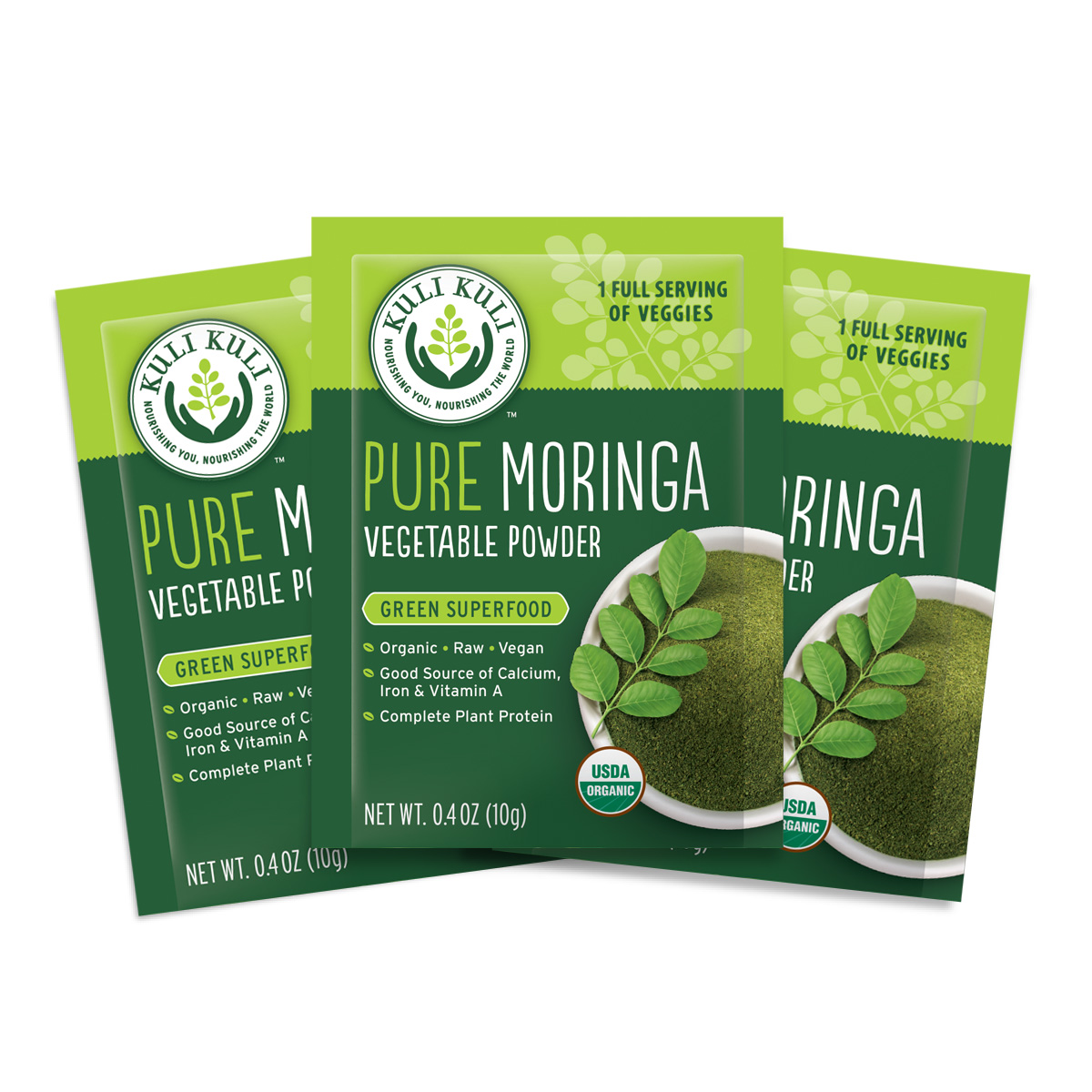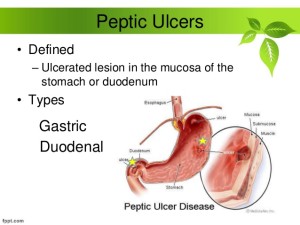
I wish good health to all lucky readers who can satiate their palates without suffering from any burning, gnawing abdominal pain. Unfortunately, one in ten Americans suffers from painful ulcers. However, there is one little-known natural remedy to help treat these ulcers: moringa! But first, let’s start with the problem.
The problem:
Peptic ulcers are holes or sores that evolve in the protective lining of the areas within the digestive system due to the effect of acids and/or enzymes. 
The vulnerable regions:
There are three most common ulcer prone regions of the body:
- Inside the stomach (Gastric ulcers);
- Inside the esophagus/ food pipe (Esophageal ulcers); and
- In the upper region of the small intestine, duodenum (Duodenal ulcers; the most common form of an ulcer).
The causes:
There are no such evident causes of the ulcer formation. It can cause due to:
- Bacterial infection caused by Helicobacter pylori (H. pylori). It is noted to be one of the significant causes of ulcer formation. Researchers have found that 90% of duodenal ulcer patients and 80% of gastric ulcer patients are infected by this bacterium.

- Excessive consumption of over-the-counter painkillers like aspirin, ibuprofen, etc;
- Poor lifestyle habits like smoking, overindulgence of fatty foods, caffeine, alcohol, etc;
- Stress; both physiological and psychological;
- Family history;
- Radiation therapy; as in cancer treatments (chemotherapy).
The symptoms:
The classic symptom is a burning, hunger pang like gnawing pain after having spicy foods (chilies, hot peppers, hot sauces), acidic foods (lemons, limes, oranges, grapefruits, pineapples, fruit juices), refined foods (white bread, pasta, sugar) or red meat ( lamb, beef, pork). These foods increase stomach acid, generating acid reflux; thereby worsening the associated symptoms. Most of the time one can feel the burning sensation of the abdomen proceeding towards the chest. In severe conditions, the pain may prevent you sleep or may wake you up.
Other symptoms include:
- Changes in appetite;
- Dark colored or bloody stools;
- Weight loss;
- Digestive problems; including nausea and vomiting.
The solution:
There are many treatments like surgery, antibiotics and/or antacid treatments. However, these treatments are costly or may have adverse effects. I’d like to introduce the superfood moringa as a convenient remedy; both in terms of  money and use. Other than being known as nutrient-packed and as an immune-booster, Moringa contains healing properties for microbial infections, cancer, diabetes, and even digestive system disorders, mostly ulcers.
money and use. Other than being known as nutrient-packed and as an immune-booster, Moringa contains healing properties for microbial infections, cancer, diabetes, and even digestive system disorders, mostly ulcers.
The supporting studies:
Moringa juice or moringa leaf tea is a well-known ayurvedic treatment for gastric ulcers. Studies have confirmed the effectiveness of moringa leaves on gastric and duodenal ulcers and inflammation. Many scientific studies have also advocated the benefits of the moringa leaves for treating different ulcers. For instance, the leaves are reported to possess modulatory action on aspirin-induced gastric ulcers. Also, the leaves increase the mucosal thickness of the stomach which eroded due to excessive aspirin consumption. The leaves also hasten the recovery process of gastric and duodenal ulcers.
However, the mechanism by which the plant heals is not fully understood. It might help by reducing the inflammation, initiation, and perpetuation with the help of phytochemical constituents (tannins and flavonoids) present in the leaf. The other antioxidants of the leaves can also play a role by eliminating the free oxygen radicals; thereby improving the overall health of the body.
The use of moringa leaves in treating ulcers and other digestive tract disorders has been a tradition of many countries including India, Pakistan, and West Africa; where it is mostly cultivated. With the help of ongoing research, it is anticipated that the modern medicinal community will soon validate the use of moringa as a classical remedial solution for this painful and chronic digestive system complication.
Citations:
- http://www.healthline.com/health/peptic-ulcer#Overview1
- http://www.livestrong.com/article/97511-stomach-ulcer-foods-avoid/
- http://www.bioline.org.br/request?tc06038
- http://onlinelibrary.wiley.com/doi/10.1002/ptr.2650090618/abstract
- Debjani Guha, S. (2011). Moringa oleifera induced potentiation of serotonin release by 5-HT3 receptors in experimental ulcer model. Phytomedicine, 18(2-3), 91-95. doi:10.1016/j.phymed.2010.06.003
- Satya Prasad, V. (2007). Effect of Leaves and Fruits of Moringa oleifera on Gastric and Duodenal Ulcers. Pharmaceutical Biology, 45(4), 332–338. doi:10.1080/13880200701212924
- Manmohan Singhal, S. (2013). Evaluation of Antiulcer Activity of Moringa Oleifera Seed Extract, Journal of Pharmaceutical Science and Bioscientific Research, 3(1), 20-25.
- http://www.valuefood.info/118/health-benefits-of-moringa/
- http://glensmoringaoleifera.blogspot.com/2015/04/moringa-treats-gastric-ulcers-and-lupus.









Wow – I am so glad I found this article. I run a reading group in my community and lots of people here have peptic ulcers (we’re transparent among friends). It could be our diet, or that we’re middle age. But we’re excited to try moringa – I hope it’ll alleviate our pain!